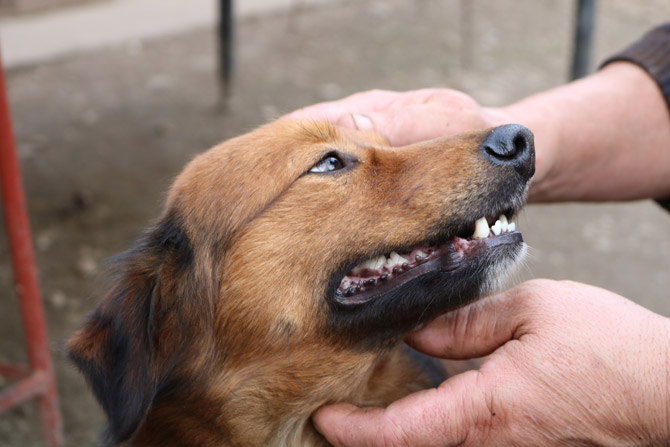April is Pet First Aid Awareness Month, which makes it the ‘pawfect’ time to chat to clients and customers about the importance of pet first aid. Not only can pet owners learn how to manage common pet injuries, but they can also ensure they have a top-notch pet first aid kit at the ready!
Certainly, when chatting to owners about pet first aid, it might be useful to highlight the most common pet injuries. This way owners can be prepared, should their beloved pets ever become ill or injured. They may also put into practice some preventative measures, if applicable. After all, prevention is the best cure!
Common pet injuries
Without a doubt, animals are curious creatures and can often be unpredictable. It is our pets’ inquisitive and excited nature that can sometimes get them into trouble. Here are a few common pet injuries you can advise pet parents about.
- Swallowing a foreign object
- Insect bite or sting
- Ingesting something poisonous
- Heatstroke
- Road accident
- Bite (from another dog)
9 first aid tips for pet owners
1. Risk reduction
Remind pet owners that first aid is not a replacement for veterinary care; any first aid administered should be followed up by a trip (or at the very least a phone call) to the vet.
2. The right tools for the job
A sparse first aid kit will only add to the stress of managing a sick or injured pet. It is the role of a responsible pet owner to ensure their pet first aid kit has all the necessary supplies to administer first aid. Check out this post for what items should be included in a pet first aid kit.
3. Choking
Managing a choking pet can be incredibly scary for owners. However, if a pet is coughing, it is still able to breathe. In this case, it’s likely the animal will clear its airway itself. According to the AMVA, if the animal stops choking and the foreign object is visible it’s appropriate to attempt to gently remove or dislodge the object with tweezers or pliers. However, great care should be taken not to push the object further down the throat. If the object can’t be removed the pet should be taken to the vet.
4. Heatstroke
If it’s suspected a pet is suffering from heatstroke they should be moved to a cool, shady area. Cool or cold towels or items of clothing can be placed over the pet’s body. Re-wet and re-wrap the animal every few minutes to try to bring down its body temperature. Take the pet to a vet.
5. Ingests something poisonous
Every year thousands of pets ingest something toxic – be it a substance found in the home or rancid fish from the beach. If poisoning is suspected owners should move their pet to a safe space, away from any potential toxins and ideally outdoors (due to the likelihood of vomiting). In the case of multiple pet households, the other pets should be kept separated to avoid coming into contact with the poison.
Make sure the pet has access to clean, fresh water. Call the vet and, in the meantime, if there is any material the pet has vomited up this can be placed in a plastic bag for the vet to review. Depending on how sick the dog has been, the vet may give something that will induce or reduce vomiting, as well as IV fluids.
6. Insect bite or sting
In the case of a bee sting or insect bite, it’s likely inflammation will occur. If the animal has a severe reaction, the owner will need to visit the vet, who will likely provide an antihistamine and medication to reduce the pain.
In mild cases and assuming the stinger has been removed, an icepack can be placed on the wound to reduce the swelling and ease the pain. Depending on the location of the wound, it can be bandaged to prevent the pet from licking the wound site.
7. Bite from another dog
According to Maroubra Vet, it’s important to determine the severity of the wound. If there is severe bleeding, stopping the blood should be first priority. This can be done using a clean towel, cloth or item of clothing. Keep applying direct pressure to the wound and if the bite is on a limb, keep it elevated while the animal is transported to the nearest vet.
If the bleeding is not severe, the priority should be avoiding infection. To do this, flush the wound with sterile saline or tap water and cover until veterinary care can be sought.
9. Broken bone
If a pet sustains a broken bone or fracture, gently lay the animal on a flat surface. A blanket or towel can be wrapped around the animal to help keep the limb in place. Pressure should not be applied. Attempting to make a splint may serve to delay veterinary assistance, so it’s best to focus on getting the animal to the vet.
What are your top pet first aid tips for owners?
Information sources:
- AMVA. Pet first aid — basic procedures. Accessed online March 2021 via: https://www.avma.org/resources/pet-owners/emergencycare/pet-first-aid-basic-procedures#fractures
- Maroubra Vet. What to do if your dog is bitten by another dog. Accessed online March 2021 via https://maroubravet.com.au/wp-content/uploads/2018/12/MV_Urban-Animal-QA_V1.pdf
Latest posts by Liz Walden (see all)
- Pet health: Medicinal cannabis for pets - December 27, 2021
- What pet business insurance do I need? - November 17, 2021
- Pet sitters: how to take time off - November 15, 2021










Leave A Comment